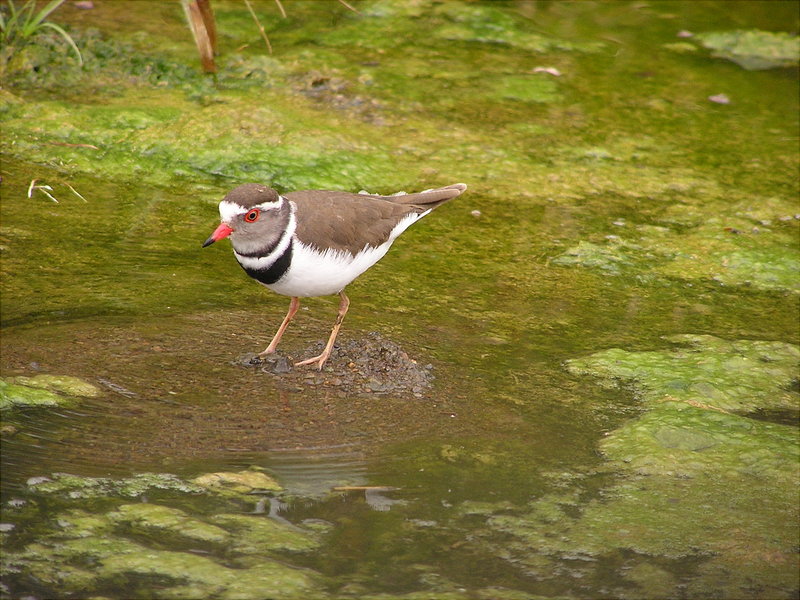|
| Query: Charadrius tricollaris | Result: 1st of 8 | |
Three-banded Plover (Charadrius tricollaris) - Wiki
| Subject: | Three-banded Plover (Charadrius tricollaris) - Wiki
| |

| Resolution: 2048x1536
File Size: 726792 Bytes
Date: 2004:06:27 04:45:51
Camera: C740UZ (OLYMPUS OPTICAL CO.,LTD)
F number: f/3.7
Exposure: 10/3200 sec
Focal Length: 630/10
Upload Date: 2007:10:01 22:13:54
|
Three-banded Plover
From Wikipedia, the free encyclopedia
[Photo] Three-banded Plover (Charadrius tricollaris) at Kruger National Park, South Africa. Dreibandregenpfeifer, Kr??ger National Park, S??dafrika. Date: 27. Jun. 2004. Photo by http://de.wikipedia.org/wiki/Benutzer:Masteraah Image URL: http://de.wikipedia.org/wiki/Bild:Three-Banded-Plover.jpg | Permission is granted to copy, distribute and/or modify this document under the terms of the GNU Free Documentation License, Version 1.2 or any later version published by the Free Software Foundation; with no Invariant Sections, no Front-Cover Texts, and no Back-Cover Texts. A copy of the license is included in the section entitled "GNU Free Documentation License". |
The Three-banded Plover or Three-banded Sandplover, Charadrius tricollaris, is a small wader. This plover is resident in much of eastern and southern Africa and Madagascar, mainly on inland rivers, pools and lakes. Its nest is a bare scrape on shingle.
The adult Three-banded Plover is 18 cm in length. It has long wings and a long tail, and therefore looks different to most other small plovers in flight, the exception being the closely related Forbes's Plover which replaces it in west Africa.
The adult Three-banded Plover has medium brown upperparts, and the underparts are white except for the two black breast bands, separated by a white band, which give this species its common and scientific names. The head is strikingly patterned, with a black crown, white supercilia extending from the white forehead to meet on the back of the neck, and a grey face becoming brown on the neck. The eye ring and the base of the otherwise black bill are red.
The Madagascan subspecies C. t. bifrontatus has a grey band between the bill and the white forehead, and the sides of the head are grey. The sexes are similar, and the juveniles of the nominate and Madagascan subspecies also resemble the adults, although the forehead is brownish for a short time. This species is distinguished from the larger, darker Forbes’s Plover in that the latter species has a brown forehead and lacks a white wingbar.
This species is often seen as single individuals, but it will form small flocks. It hunts by sight for insects, worms and other invertebrates. Three-banded Plover has a sharp whistled weeet-weet call.
http://en.wikipedia.org/wiki/Three-banded_Plover
| The text in this page is based on the copyrighted Wikipedia article shown in above URL. It is used under the GNU Free Documentation License. You may redistribute it, verbatim or modified, providing that you comply with the terms of the GFDL. |
|
Comments |
|---|
| | cialis sale |
|
| 23kJle slwepiuk emepoedw ykgtjezw |
 |
 |

|
Charadrius tricollaris
1/8 |

|
 |
^o^
Animal Pictures Archive for smart phones
^o^
|
|
|

